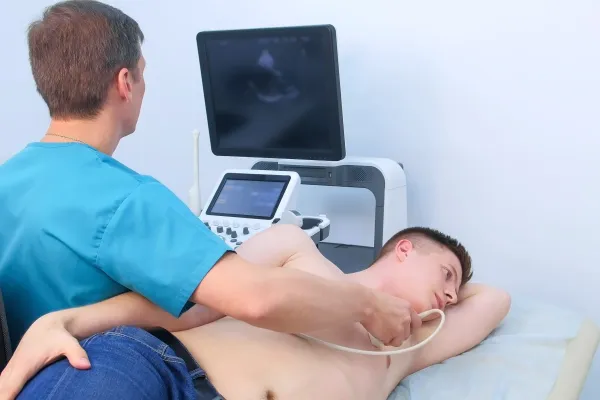Ob-Gyn Coding Alert
Bust 4 Myths to Distinguish Aftercare from Follow-Up Encounters
You may face a denial if you try to report aftercare with a monitoring code.
When you think of follow-up, you probably think of ongoing treatment for a patient. Quite logically, you might even think of other, similar terminology like “aftercare,” “monitoring,” or “surveillance.” But when it comes to encounter codes, each one of these terms carries a different, specific meaning that could have a big impact on your ongoing care coding.
So, here are four myths to bust that will help you report ongoing care encounter codes easily and accurately.
Editor’s Note: A subscriber reached out to us to suggest an article about this topic. She said, “the global coders we work with put these terms on any chart that says follow-up on the template header or HPI.” If you have an idea, feel free to reach out (email: suzanne.burmeister1@aapc.com or Twitter: @SuzanneBWrites)!
Myth #1: “Follow-Up” Is the Same as “Aftercare”
Reality: These terms are very different. The ICD-10-CM official guidelines make the following distinction between follow-up and aftercare.
Follow-up: ICD-10-CM’s guidelines state that “the follow-up Z code categories imply that the condition has been fully treated and no longer exists.” The codes in question are:
- Z08 (Encounter for follow-up examination after completed treatment for malignant neoplasm)
- Z09 ( ... for conditions other than malignant neoplasm)
- Z39 (Encounter for maternal postpartum care and examination)
Ob-gyn coders will be most familiar with Z39.2 (Encounter for routine postpartum follow-up), but just as frequently the code Z08 will be reported by a gyn oncologist who is seeing the patient 6 months postop a hysterectomy for cancer, says Melanie Witt, RN, MA, an ob-gyn coding expert based in Guadalupita, N.M.
While you’ll use Z08 for follow-up exams after a malignant neoplasm, you’ll use Z09 for all follow-up visits when the patient has finished their treatment plan, such as antibiotics, steroids, any type of medication, regardless of who put the patient on the medication. Coders, Witt explains, “need to use this code first and then use a secondary code for a history of a disease.”
The guidelines go on to note that “they should not be confused with aftercare codes.”
Aftercare: On the other hand, aftercare codes “cover situations when ... the patient requires continued care during the healing or recovery phase, or for the long-term consequences of the disease.”
Contrast the follow-up codes to the main group of aftercare codes, Z42-Z51, which ICD-10 clarifies “are for patients who have already been treated for a disease or injury, but who are receiving aftercare.” These codes are much more detailed
in nature and include such ob-gyn-oriented encounters as Z44.8 (Encounter for fitting and adjustment of other external prosthetic devices) when the patient presents for Pessary care, and Z48.02 (Encounter for removal of sutures).
So, experts say that “timing and specificity” are the key terms that will help you understand the difference between follow-up and aftercare. In other words, when you have more specific subsequent care codes for an injury, they would supersede the more general follow-up codes, making Z08-Z09 and Z42-Z51 Excludes1 codes per ICD-10 guidelines.

Myth #2: You Can Report a “Monitoring” Code with an “Aftercare” One
Reality: In actuality, you’ll find an Excludes1 note preventing you from reporting a monitoring code with an aftercare one.
This group of aftercare codes, the Z51 (Encounter for other aftercare and medical care) code group, can also be confusing. Because the variations of Z51 are so specific, like Z42-Z49, they are mutually exclusive to Z08 and Z09.
So, a code such as Z51.81 (Encounter for therapeutic drug level monitoring) is classified as an Excludes1 for any of the follow-up codes, as are all the codes in the Z51 group.
Myth #3: Coding Both Aftercare and Surveillance Codes Are Fine
Reality: You cannot report a surveillance code with an aftercare code.
Even though the notes that accompany Z08 and Z09 point out that these codes are to be used for “medical surveillance following completed treatment,” you’ll also get into trouble if you use Z30.4- (Encounter for surveillance of contraceptives), which is another Excludes1 code for Z09.
So, too, are another group of codes from the Z42-Z49 group, where Z44-Z46 codes are described in the Excludes1 note for Z09 as “surveillance of prosthetic and other medical devices.”
Myth #4: An Aftercare Code Means Subsequent Encounter
Reality: Not so fast.
The ICD-10-CM guidelines will remind you that “injury codes with a 7th character for subsequent encounter[s]” should not be confused with the follow-up codes. The guidelines accompanying Chapter 19, “Injury, poisoning, and certain other consequences of external cause,” go on to explain that most of the “S” and “T” codes take a seventh character, and that when the subsequent encounter character, “D,” is attached, you should not follow-up codes, or aftercare codes, in your documentation.
As Witt explains, coders “would not usually use the Z code for a recheck for an injury because they will normally use the injury diagnosis code with a subsequent encounter. This means the injury, accident, or poisoning is now in the healing stage.”
So, you would document a patient reporting back to your ob-gyn for subsequent care following a laceration of the vulva with S31.41 (Laceration without foreign body of vagina and vulva) as this is a more relevant, meaningful choice than any of the catch-all Z codes.
Related Articles
Ob-Gyn Coding Alert
- Gynecology:
Capturing Additional Procedures is Key for Determining Correct Colposcopy Codes
Pull out key phrases to ensure you’re selecting the most accurate choice. Your colposcopy coding [...] - Coding Quiz:
Are You a Consult Coding Whiz? Find Out.
Find out when to apply modifier AI. You know Medicare won’t reimburse consultation codes, but [...] - ICD-10-CM:
Bust 4 Myths to Distinguish Aftercare from Follow-Up Encounters
You may face a denial if you try to report aftercare with a monitoring code. [...] - Coding Quiz Answers:
Check Your Consult, E/M Coding Skills With These Quiz Answers
Hint: Only look to unlisted E/M codes when your MAC specifically tells you to. How [...] - You Be the Coder:
Repeat C-Section With Pelvic Adhesions
Question: How would I code for a repeat global c-section, T incision on uterus? I [...] - Reader Questions:
Question Whether Ob-Gyn Excised Ovarian Tissue
Question: I am hoping to get some advice coding this surgery. The ob-gyn performed laparotomy, [...] - Reader Questions:
Back Off Billing for Telephone Triage
Question: We have been getting calls from patients who have tested positive for COVID-19 and [...] - Reader Questions:
Get a Grip on Medicare’s G Modifiers
Question: Can you explain the difference between the four G modifiers required for use when [...]




